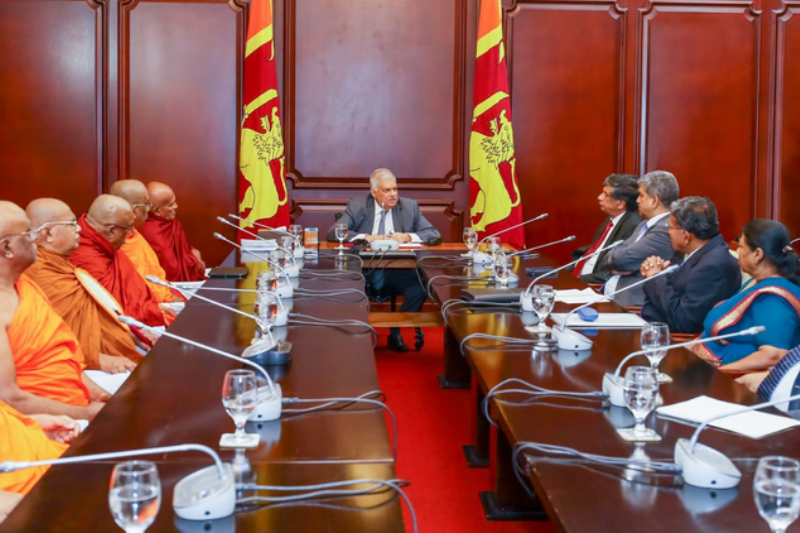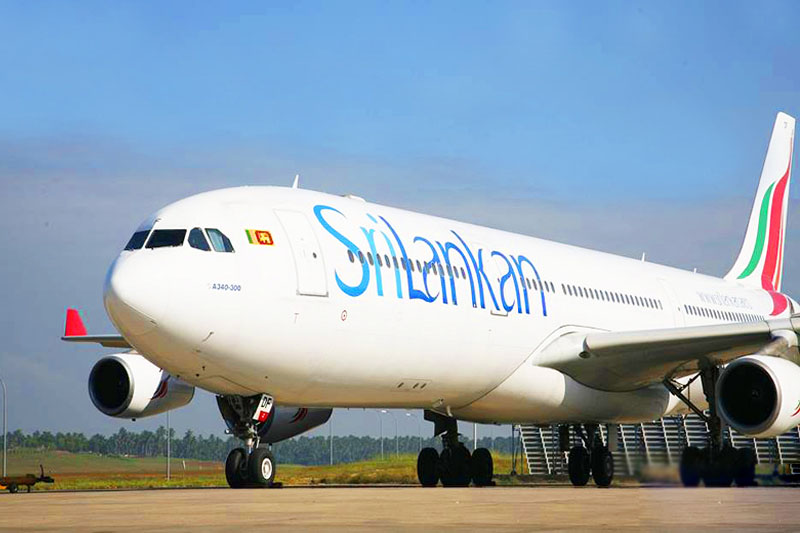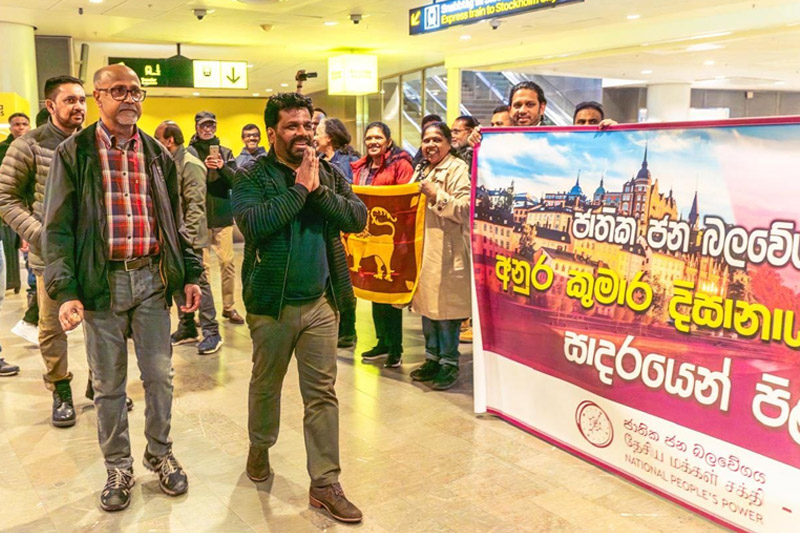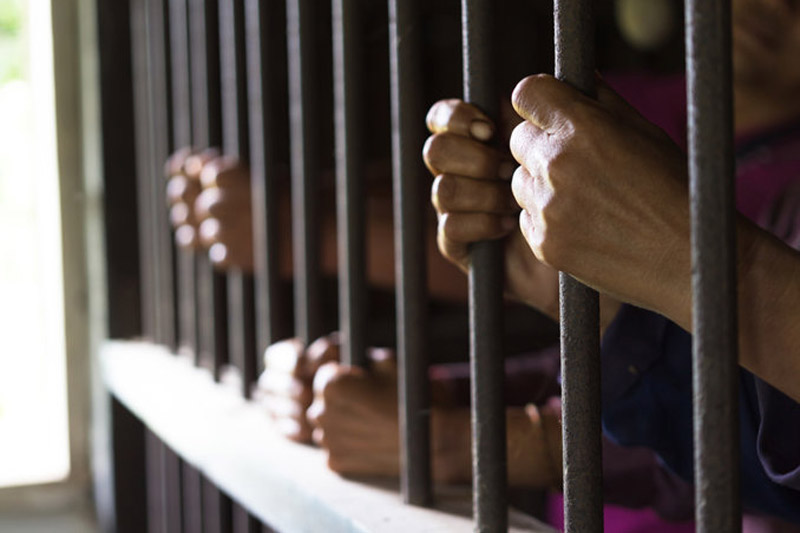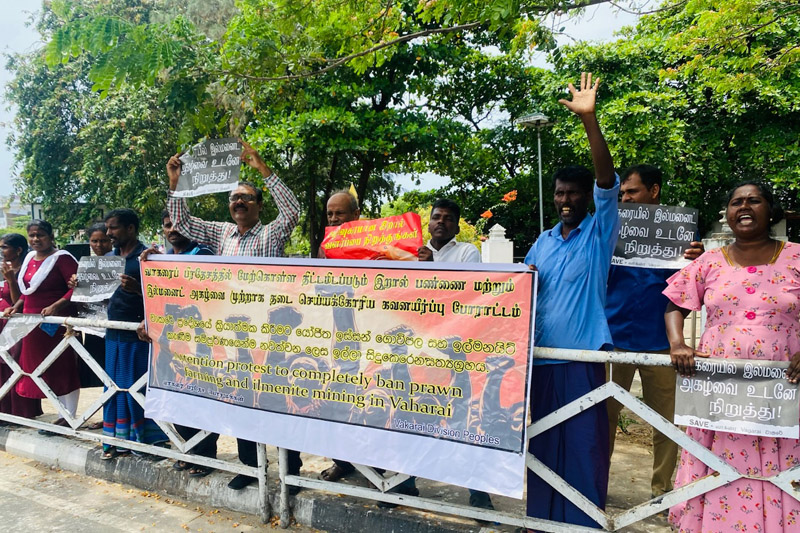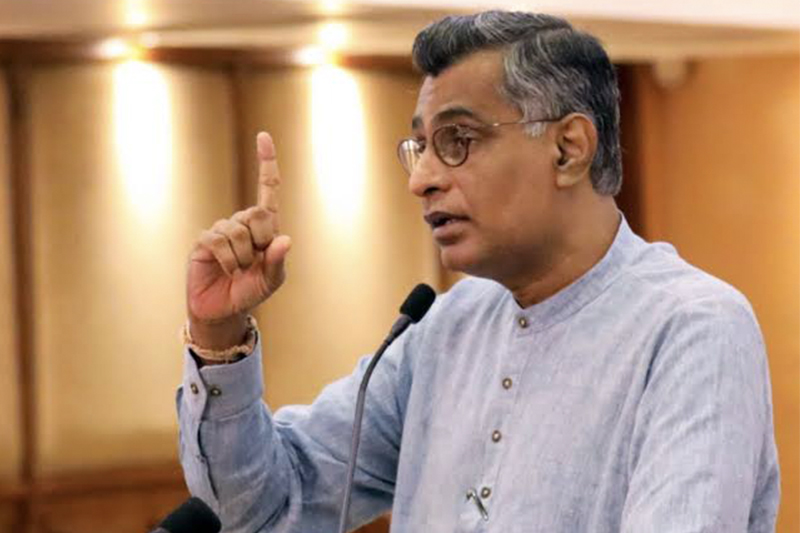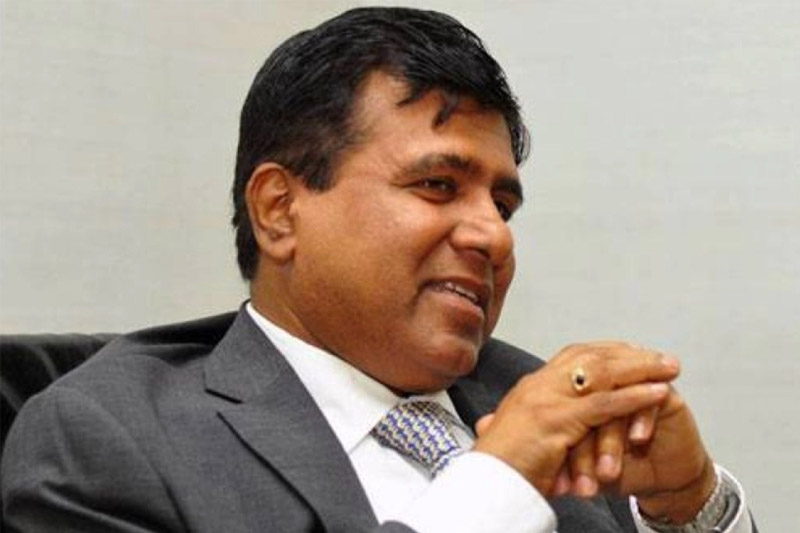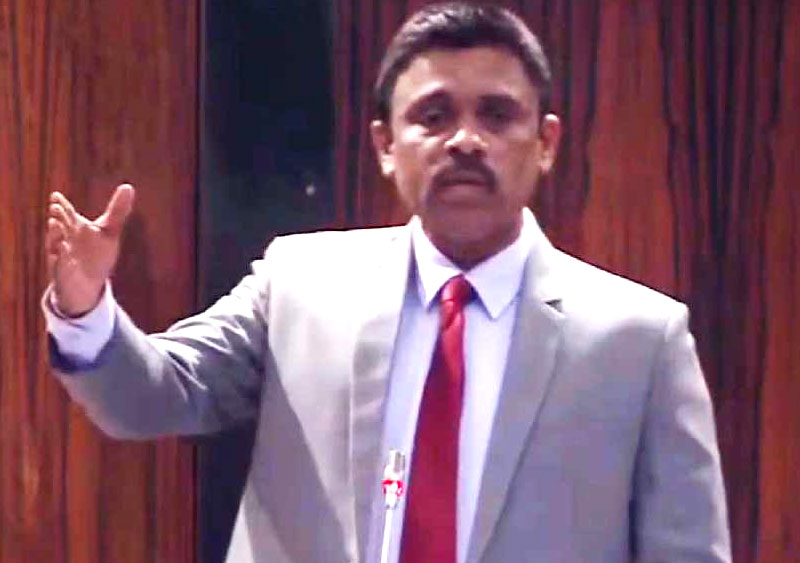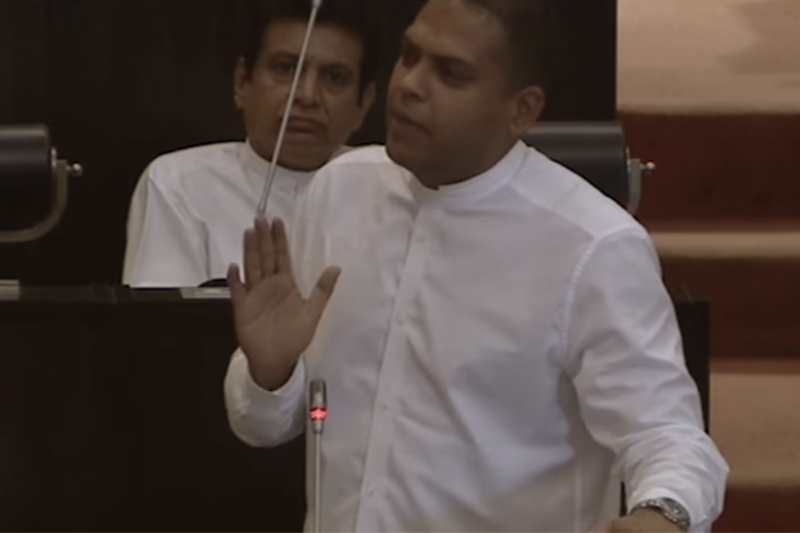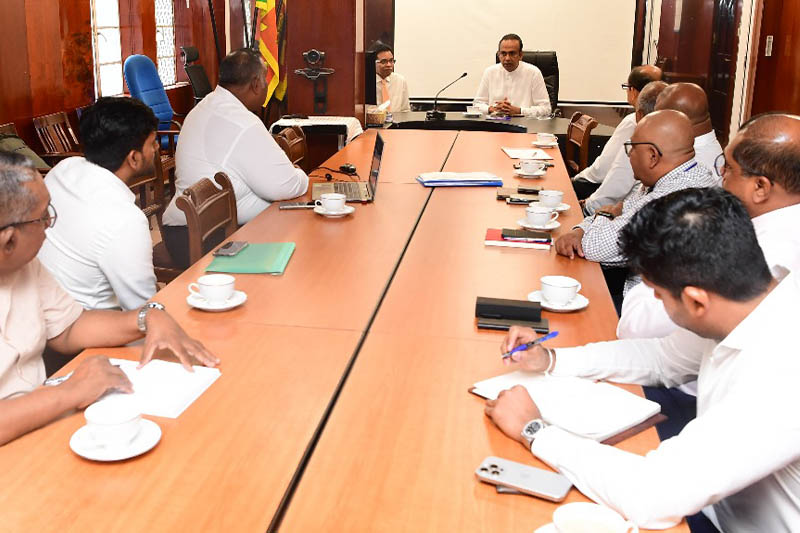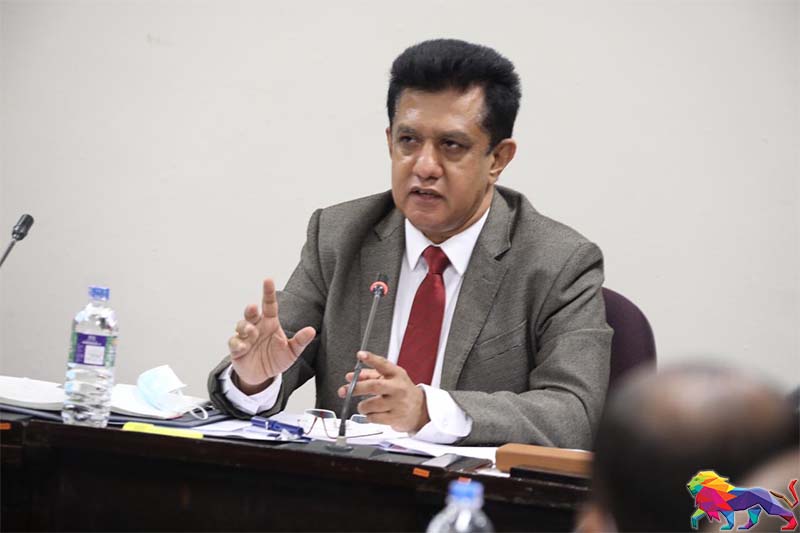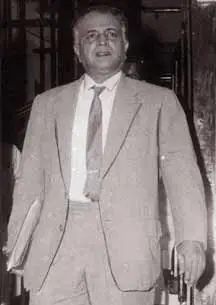 “That in the opinion of this House, the Ceylon [constitution] Order-in-Council be amended forthwith to provide for the Sinhalese and Tamil languages to be state languages of Ceylon with parity of status throughout the Island……. Mr Speaker, I want in the first instance to ask this question: What are we aiming at? What is the objective we have in mind for this Country? Do we want a united, strong and an integrated Nation or not?.... If democracy is to be treated as an arithmetical concept that whatever majority decides it must be accepted merely because they have got superiority in members, that is not democracy….. The test of a democratic decision is the morality of the law…. There is no reason why they should separate unless we force them to separate by making Tamil a regional language confirmed to the Northern and Eastern provinces. That is what we are driving them to, that is what people who are advocating Sinhalese as the only official language do not seem to realize.” - (Dr. N.M Perera moving a motion on language in House of Representatives - October 19, 1955)
“That in the opinion of this House, the Ceylon [constitution] Order-in-Council be amended forthwith to provide for the Sinhalese and Tamil languages to be state languages of Ceylon with parity of status throughout the Island……. Mr Speaker, I want in the first instance to ask this question: What are we aiming at? What is the objective we have in mind for this Country? Do we want a united, strong and an integrated Nation or not?.... If democracy is to be treated as an arithmetical concept that whatever majority decides it must be accepted merely because they have got superiority in members, that is not democracy….. The test of a democratic decision is the morality of the law…. There is no reason why they should separate unless we force them to separate by making Tamil a regional language confirmed to the Northern and Eastern provinces. That is what we are driving them to, that is what people who are advocating Sinhalese as the only official language do not seem to realize.” - (Dr. N.M Perera moving a motion on language in House of Representatives - October 19, 1955)
What’s all this present hype about six (06) sentences called the “Joint Himalayan Declaration”? A supposed “declaration” signed almost 08 months ago on 27 April in Nagarkot, Nepal. Signed between a few lesser representative Buddhist Sangha chapters or “nikayas” and the “Global Tamil Forum” (GTF). A depleted organisation that no more represents the Tamil Diaspora as it did a decade and a half ago at its founding.
Far more serious and in-depth discussions than what is bluffed in this declaration have taken place since the Bandaranayake – Chelvanayakam Pact signed in 1957, backtracked by PM Bandaranayake with the UNP galvanizing Sinhala protests and Buddhist monks threatening a sit-in at the private residence of PM Bandaranayake. The next compromise worked out as the Dudley - Chelvanayakam Pact in 1965 was abrogated again in 1968 due to street protests by SLFP, LSSP and CP that led to the unfortunate death of young novice monk Dambarawe Rathanasara thero from police shooting. Past 50 plus years would have seen over a dozen direct and mediated peace initiatives, all stalled due to ethno-racial opposition in Southern politics.
In January 1984 President Jayawardene chaired an All Party Conference (APC) held in Colombo with political parties in Sinhala South and democratic Tamil political parties participating. At this first APC, leader of the TULF Appapillai Amirthalingam presented a written statement that traversed the long history of Sri Lanka’s National Conflict.
In his written statement Amirthalingam says, “They (Sinhala racists) seem to forget that 5th June 1956 marked the first mob violence against Tamils.” An organised mob attacked the “Sathyagraha” organised by ITAK at Galle face green against the Sinhala Only Act with sticks, poles and stone throwing. The most saddening quote from Amirthalingam’s statement is, “….and when I walked into Parliament with a handkerchief tied round my head and my clothes soaked in blood, the then Prime Minister (Bandaranayake) quipped ‘honourable wounds of war’….” Bandaranayake thus implied that thuggery against a peaceful protest had his blessings. Amirthalingam then goes on to ask, “Can anyone who values truth say that this was the result of the Tamils resorting to violence? Or because the Tamils demanded a separate state?” There was no LTTE nor armed Tamil politics then in 1956 nor a demand for a “separate” Tamil State. But as Dr. N.M. Perera said in 1955, The Sinhala racists were pushing them for “separatism”.
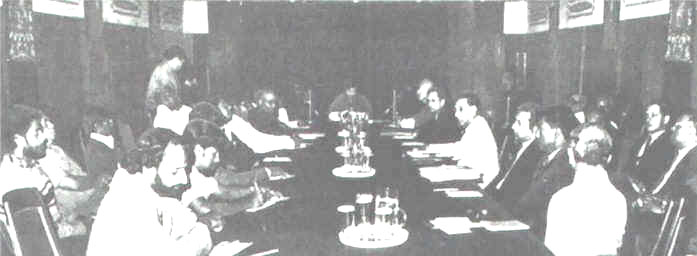
Inside the Meeting Hall - Phase 1 of Talks with the Tamil Delegation on Left and Sri Lanka Delegation on Right
Thereafter bi-lateral discussions in Thimpu, Bhutan were held in 1985 July with all armed groups attending. Thimpu discussions established the concept of the “Tamil Homeland” as North and East and as a non-negotiable demand in any future negotiation.
Elected president in December 1988, Premadasa initiated direct negotiations with the LTTE in Colombo as the sole representative of Tamil people beginning April 1989 that continued in staggered form till June 1990 and an APC with LTTE as an observer at BMICH in August 1989 attended by mainstream political parties in Sinhala South. The SLFP participated in the first two meetings and withdrew thereafter. In 1994 October President Chandrika Kumaratunge initiated direct talks with the LTTE that carried extremely high hopes for peace but ended as a hopeless event, with Chandrika not taking the LTTE seriously to negotiate with.
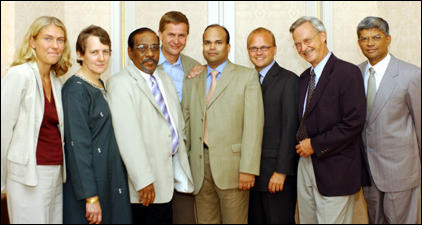
On August 14, 2002 a meeting was held in Oslo between the Sri Lankan Minister of Economic Reforms, Science and Technology and Deputy Minister for Policy Development and Implementation, Milinda Moragoda, and the chief negotiator for the Liberation Tigers of Tamil Eelam (LTTE), Anton Balasingham. (PIC: Tamil Net)
Thereafter, with Norwegian facilitation, negotiations with the LTTE began in 2002 August. At the third session in Oslo on 05 December both parties agreed on a federal system of power sharing. The Norwegian government thus issued a statement that announced “…. the parties have agreed to explore a political solution founded on the principle of internal self-determination in areas of historical habitation of the Tamil speaking peoples, based on a federal structure within a united Sri Lanka.”
What is this 2023 “Joint Himalayan Declaration” about? This GTF initiated declaration is as old as the Indo-Lanka Accord of 1987 July that led to the 13 Amendment. Thus, the GTF manipulated Joint Himalayan Declaration will once again reduce negotiations to 13 A “Plus” with “faithful” implementation of provisions of present constitution proposed as “temporary” with no timeframe proposed
Surprisingly, Tamil Diaspora groups have not raised the Oslo Declaration as binding on the GoSL. The Oslo Declaration is not a legal agreement between the GoSL and the LTTE. It is a political pledge by the GoSL to provide Tamil people with the Constitutional right to govern themselves within a federal system in a unitary, undivided country. Democratic Tamil leadership since the defeat of the LTTE has principally stood for a “federal solution” within a “united, undivided and an indivisible Sri Lanka” as Sampanthan has been always saying. The irony is no political leadership in the North and South campaign for a federal system of government as the democratic answer to the unresolved conflict.
What kept this national issue unresolved and festering? GoSL agreed to enact 13 A in July 1987 and established PCs. Agreed for a federal system in 2002 December in front of international media. Why does the conflict still remain unresolved? Simple reason is, these were not political positions governments came to, on their own political understanding and convictions. They were positions governments were pushed into by other external factors with geo-political interests within a global economy.
With all negotiated settlements sabotaged since 1957 by Sinhala-Buddhist racism, every new round of negotiations demanded more authority for Tamil areas to make certain they would not be robbed of power. Therefore, from the Regional Councils agreed upon with the B-C Pact of 1957, through PCs within a Unitary State in 1987, the GoSL in 2002 had to agree for a federal system of governance.
Yet no government and no Southern political leadership engaged people in discussing these proposals to have their consent for implementation. Gradually reducing themselves to be Southern Sinhala political parties, they feared they would lose their Sinhala-Buddhist vote base if the proposed devolution for North-East. In the South, all political parties have been competing to be more “Sinhala nationalist” than the other to gain Sinhala-Buddhist votes. Therefore, with a dominant Sinhala-Buddhist social psyche established, close-door negotiations and open politics are two different and contradicting approaches in the South, except when political leaderships feel divisions in the South require some additional votes from North-East to go beyond what South could deliver to form a government. There again its mere manipulations to retain the Sinhala-Buddhist image as large as possible.
Classic case is the present interest President Wickremesinghe shows in settling the Tamil National issue. With the Southern mainstream political parties gearing up for elections, President Wickremesinghe knows he needs traction in the North-East to remain a decisive factor in post-election politics. His Plan-A was to initiate discussions with Tamil political parties. He spoke about improving PCs with more powers provided and closing the chapter of conflict and animosity. His rhetoric could not hold Tamil leaders in dialogue. They withdrew saying President Wickremesinghe is not serious and sincere and nothing more than “strengthening PCs” is offered.

Wickremesinghe therefore needed a Pan-B that comes with a vague declaration the GTF offers as the Joint Himalayan Declaration in collaboration with few Buddhist monks. The “Joint Himalayan Declaration” was presented to President Wickremesinghe and was discussed with the Speaker and members of parliament. It is being played out with subtle tact, GTF leader Suren Surendiran promising the Sinhala audience they do not stand for “a separate Tamil State”. This out in the clouds initiative is being carried to elite Sinhala-Buddhist representations for publicity.
Meanwhile President Wickremesinghe as the Finance Minister used the budget speech to project himself as a convinced Buddhist. He told parliament his budget 2024 is based on the Buddhist concept of “Samjeewikatha” and set aside allocations for a Buddhist University and a Buddhist Library for Anuradhapura and a Buddhist heritage museum to Kandy. He also promised a new opening for cultural tourism based on Buddhist heritage. He perhaps believes he could build on his Southern vote with that Sinhala rhetoric and have the GTF initiative for power devolution to collect more votes from the North-East.
Riding two horses all at the same time in two different directions, one in the North-East and the other in the South definitely proves its plain foxy politics, deceptive in every way. Fact remains they are not seriously and politically challenged by any in the public domain. They have to be challenged on Southern ground with extremely serious proposals with logical answers to both the post war issues and to the issue of power sharing. If the Tamil leadership is serious in driving for lasting answers, which is also doubtful, there are two extremely well drafted comprehensive documents idling since 2010 that should be brought for social discussions.
First is the LLRC Report that addresses the most important issue of de-militarising the North-East and establishing an effective civil administration which is now valid for the South as well. It also accepts, power sharing is democratising society that should be positively adopted nationally. The second is Prof. Tissa Vitharana chaired APRC Final Report. That provides for a novel restructuring of the State for provincial autonomy within a “united, undivided and indivisible Sri Lanka.” Most importantly this APRC Final Report is the only proposal yet for serious power sharing that has consensus from most extreme Sinhala-Buddhist campaigners in the South.
Now who would say Mahinda Rajapaksa is anti-Sinhala-Buddhist to have them compiled so comprehensively? Together, they provide the best alternative the Tamil leaders should demand immediate implementation. Himalayan Declaration in fact is mere crap compared to what these two documents offer as redress and as a political solution.
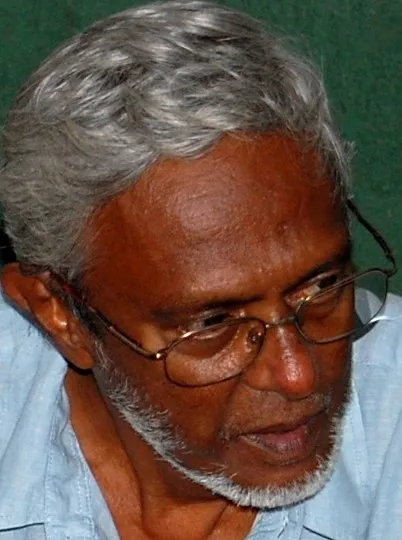
Kusal Perera
Political essayist and journalist
This email address is being protected from spambots. You need JavaScript enabled to view it.

